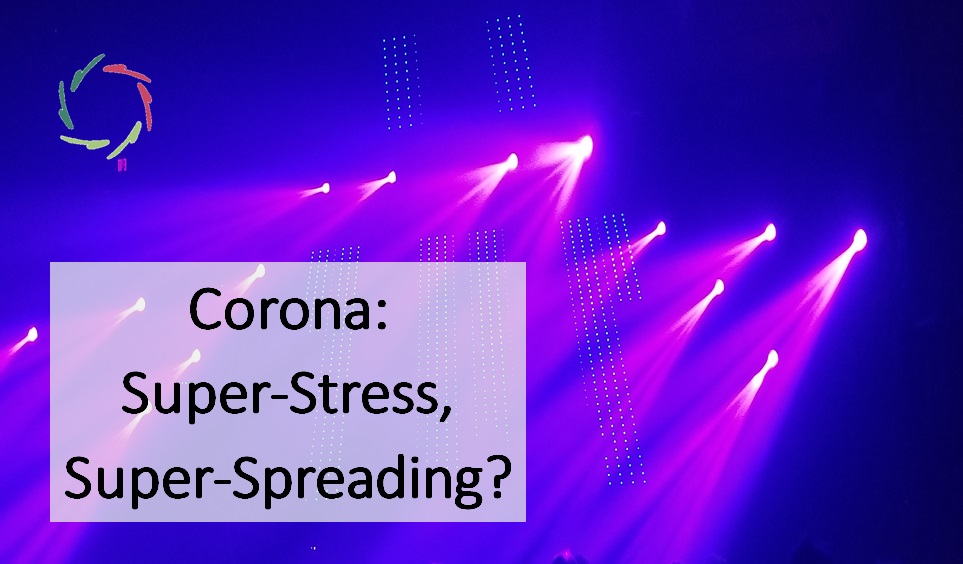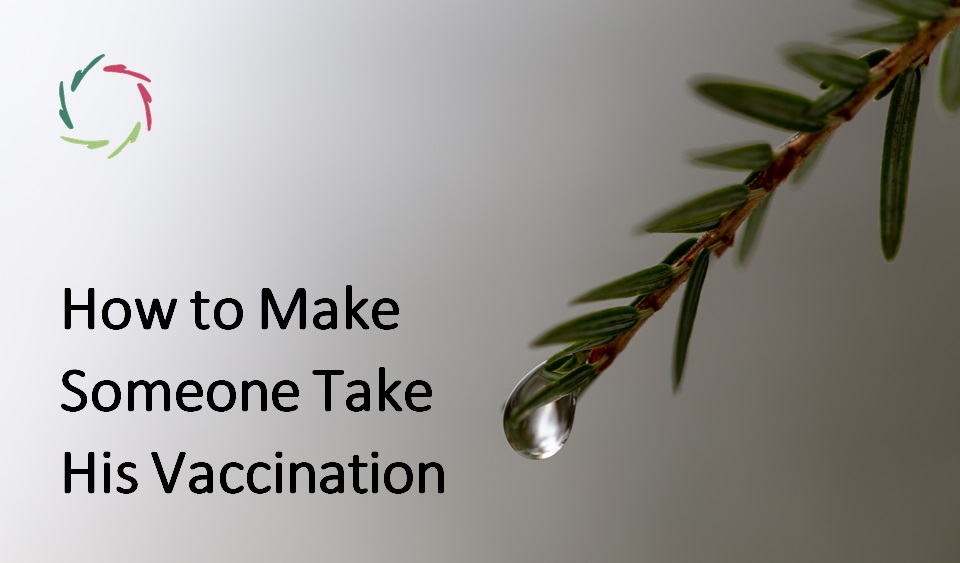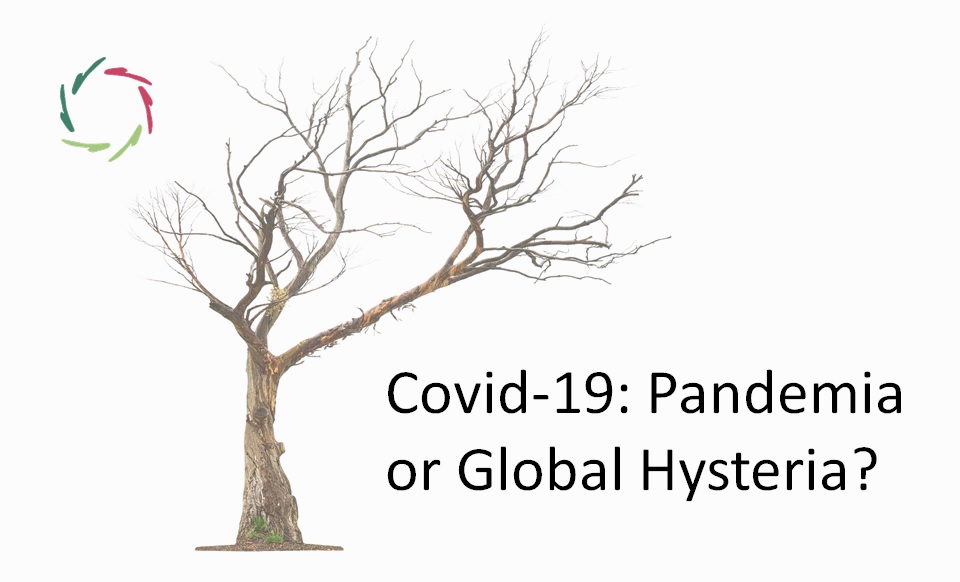18. Corona: Super-Stress, Super-Spreading?

On top of an influence on COVID-progression, does stress also influence the rate of infection by infected persons? In that case, can the AURELIS-app diminish this rate?
July 26, 2020
Super-spreading
Some viral-infected people spread the virus more than others. This has been found in many infectious diseases, including in salmonellosis, tuberculosis, SARS-1 (2003) and MERS (2015). An 80-20 rule may be applicable. More or less, 20% of the infected people provoke 80% of new infections. According to some studies, even much less provokes much more. The definition of super-spreader is vague The term is used to denote people who are at the high end of the curve of infectivity. An extreme case is a person in South Korea, known only as patient 31, who transmitted the virus to over 1,100 people at an early stage of the outbreak. [https://graphics.reuters.com/CHINA-HEALTH-SOUTHKOREA-CLUSTERS/0100B5G33SB/index.html]
This is crucial. If we know what makes a person into a super-spreader, e can see how to diminish their infectivity, and, for that sake, the infectivity of anyone. This way, we can probably solve a substantial part of the problem in the best way: by preventing it.
Relevant factors in super-spreading are described as related to viral characteristics, personal behavior, and environment. Behavior (nonchalance) and environment (sports venues, churches, business, even hospitals) are rather evident. As an example, in the news these days, US federal agents in Portland, Oregon use teargas on shouting protesters (mainly protesting against the agents), drive them together, confine them in vans, stress them in many other ways. Absurd.
Where’s the stress?
Meanwhile, what we are missing in the research is… psychosocial stress. I did an extensive search in PubMed today and found nothing corona-related in humans.
As to bats, I found on the Internet a communication by prof. Vikram Misra, a veterinary microbiologist from the University of Saskatchewan (U of S) [https://news.usask.ca/media-release-pages/2018/stressed-bats-can-increase-spread-of-deadly-viruses-.php] :
“Bats have a really benign relationship with their viruses until you stress them through secondary infections or other stressors… That’s when they start producing and shedding more viruses.” What ’other stressors’ may be, is not clear in this communication. Elsewhere on the same page, we find: “Bats are responding to stress from such things as habitat destruction, lack of nutrition and infections by increasing the production and shedding of viruses that cause serious and often fatal diseases in humans and other animals.”
Hm. Not much. On another page, we find from the same:
“When a bat experiences stress to their immune system, it disrupts this immune system-virus balance and allows the virus to multiply.” And interestingly: “We see that the MERS coronavirus can very quickly adapt itself to a particular niche… Coronaviruses rapidly adapt to the species they infect.” That’s including us.
In conclusion, science doesn’t help in this respect. Disappointing, I dare say. We know nothing. That, of course, doesn’t show there is nothing to know. It only shows that anything is possible. The possible range for the importance of psychological factors in infectivity is from nothing to huge. Our tool in order to find some guidance is common sense.
Common sense
If the immune system has trouble subduing an invader (bacterium, virus), logically, the pathogenic load will increase. In COVID-19, no exception, a higher viral load means more infectivity. From this and the whole content of my book MINDING CORONA, we can deduce that, most probably, stress plays a substantial role in infectivity. With present-day technology, this is difficult to prove in the human case. In animals such as mice, sorry for the mice, such experiments can be done. I would love – sorry for the mice, again! – to see them done.
Coronaviruses seem to adapt well to their host. In a way, this is not different to other viruses such as Influenza. In the latter case, in the pandemic years from 1918 onwards, the Influenza-virus adapted by way of not killing too many people. Not stupid, because: no host, no replication of the virus itself. So, over very many of its short-lived generations, the virus became less virulent. Even so, people are still dying from continually mutated viral strains. But as a stress-virus, SARS-CoV-2 is different in that it lets itself be replicated and shedded during days of little immune reaction (weak phase). When this flops to over-reaction (hard phase), the virus already doesn’t need us anymore. Super-spreaders have super-spread it around.
Well, that’s the picture. I’m sure that future insights will show this not to be of the utmost accuracy. We will learn to refine this and take some errors out. Even so, the mainline is probably correct. As a consequence, we should take this at heart to an immense degree.
The Aurelis app?
[see: “Free App to Relieve COVID“]
In that case, and turning to the Aurelis app, which is available meanwhile in the app stores, I absolutely recommend to use it from the first symptoms or COVID-positivity onwards. In that case, the reason why is twofold:
- helping yourself to stay or get out of the COVID-whirlpool as well as possible, relieving sickness, complications, and a chance to die
- helping others through making oneself less infectious.
Regarding the latter, I think of an immune system that may be turned on more readily, shortening the period in which the virus can run around the body ad libitum and heighten its viral load, and shedding. I also think of less coughing and sneezing and running around in distress. Dear reader, I don’t know about you, but personally, I can orient my attention to my lower airways at any time and start feeling some irritation, up to coughing – not simulating to cough – out of nowhere. I guess this is a self-influence that anybody can exert, if not always equally consciously initiated.
If the rate of infectivity drops, fewer people die. If more infected people recuperate, fewer people die. It is as simple as that.


